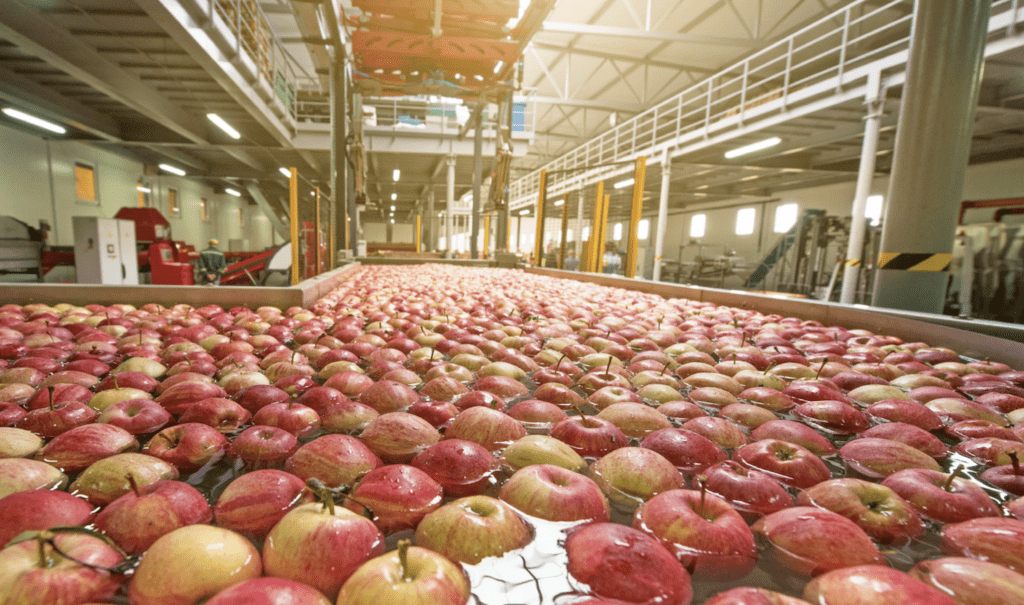Editor’s note: Originally published in Field Service, a quarterly print magazine by Field Service Digital and Predix ServiceMax. Check out the full magazine in print or online.
During an apple’s journey from tree to packhouse to market, speed and careful handling are essential for delivering a fresh, undamaged fruit. That’s why the fresh produce industry—until recently, many aspects of the grading, sorting and inventory packing process was done by hand—has embraced automation.
Compac, a leader in post-harvest sorting technology, has been working side by side with growers and packers around the world to provide and maintain equipment that ushers produce to market at peak freshness and quality. And the company, like the farmers and distributors who use its equipment, is retooling its operations. The goal: less manual work, more-responsive service.
In the past, the New Zealand-based firm reacted to customers’ requests for repairs when equipment went down. That evolved into a proactive service model in which Compac could alert customers to maintenance needs before a breakdown occurred. Now, the company is preparing for the next step: advising its customers on ways to keep production lines running efficiently and cost-effectively.
‘Every Minute Counts’
Customers eagerly embraced the efficiency of automated produce packing and grading throughout the past decade—sometimes too eagerly, says Darrell Smithson, Compac’s vice president of global services.
“They were often less mature in operating this sophisticated machinery,” Smithson says. “They’d run the machines until they went down, thinking that if a part failed, they would just get another one.”
The problem was that while grading, sorting and packing machines were down—and while customers waited for Compac technicians to fix the problem—produce sat idle, ripening or aging past its peak of flavor. “Every minute counts,” Smithson says.
A Proactive Service Culture
Compac started using Predix ServiceMax in 2017 to change its service culture from reactive to proactive—and to help its customers indeed make every minute count.

Darrell Smithson
“Reactive maintenance doesn’t work when you have trucks turning up with hundreds of bins of fruit to be processed,” Smithson says.
Before ServiceMax, Compac technicians had strong connections with customers but couldn’t get 360-degree views of their packhouse needs—or advise them on preventive maintenance that could prevent down time.
“We thought, how can we maintain that one-to-one intimacy while giving service techs a way to share their knowledge with everyone else?” Smithson says. “We weren’t operating in a way that was scalable. We needed a system that would smooth out the experience.”
The beauty of using field service automation, Smithson says, is that Compac didn’t have to trade good customer relationships for automation. It was a culture change internally, Smithson admits, but when service techs realized that they could draw on records of past service appointments to give customers advance notice of critical maintenance, techs saw the value of automation. And even customers who relied on their favorite techs came to like the idea of calling a service center to get comprehensive recommendations for keeping their equipment in good health.
“Reactive maintenance doesn’t work when you have trucks turning up with hundreds of bins of fruit to be processed.” — Darrell Smithson, vice president of global services, Compac
Fixing the Break-Fix Model
Smithson doesn’t want to stop at proactive service. He’s brainstorming ways to improve the overall efficiency of customers’ packhouses by analyzing the data that Compac’s machines collect. The company’s software and hardware systems can track day-to-day performance and identify conditions that get in the way of optimal sorting, grading and packing. Smithson wants to integrate this data with ServiceMax, allowing techs to share it easily with customers.
“We could tell a customer that they’re not grading fruit as quickly on one lane as they are on others,” Smithson explains. “Perhaps we’d see that the lighting was failing on that machine or there was too much dust, which meant the image of the fruit wasn’t fully illuminated.” At that point, Compac can suggest that a technician be dispatched to check out the problem.
Smithson sees this capability as the future of service. “We’re examining the performance of the whole customer system, so that they can run every line better.”
Click here to read the latest full issue of Field Service. Images courtesy of Compac.


Share this: